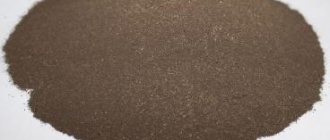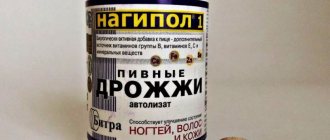In medicine, centrally acting drugs are used to treat nervous disorders. The human central nervous system functions using two mechanisms:
- excitation,
- depression of nervous activity.
Phenobarbital is a drug with an inhibitory effect. How does this medicine work? After entering the human body, this drug is absorbed in the small intestine and enters the blood. In turn, the human circulatory system distributes the incoming drug to all organs and has an effect specifically on the nerve endings that receive exciting signals. "Phenobrabital" blocks excitatory signals.
The maximum effectiveness of Phenobarbital is observed at the level of the human medulla oblongata - the subcortical structures of the central nervous system. Due to the inhibition of the activity of the cerebral cortex, this drug has a pronounced sedative and hypnotic effect.
Call us now:
+7 (812) 454-00-50
Prices for Ultramed clinic services
Origin and history of the drug
Phenobarbital is a derivative of barbituric acid. It was synthesized by Adolf von Bayer in 1863. The drug became a huge discovery for its time, as it allowed psychiatrists to pacify a violent person who was in this state for a variety of reasons.
Barbital was officially introduced to the world in 1903, after which its improved versions began to appear, in particular phenobarbital.
Barbiturates skyrocketed in popularity as many people used it to relieve stress or insomnia. Later, problems and complications caused by the drug, as well as dependence on it, began to be identified. Cases of drug overdose often occurred, as some liked the state caused by barbiturates.
Newborns
For newborns, this remedy can be used in case of hemolytic disease . It increases the detoxification function of the liver and reduces the bilirubin in the serum.
If mothers use the drug in the last trimester of pregnancy, for newborns this is fraught with the development of physical dependence on the drug and withdrawal syndrome , up to acute withdrawal syndrome, which manifests itself as epileptic seizures and increased excitability immediately after birth or during the first couple of weeks.
Use during childbirth in some cases causes respiratory depression in the infant, especially in premature infants.
Taking this drug as an anticonvulsant during pregnancy can cause bleeding in the baby in the first days after birth.
Effects of phenobarbital on the body
The drug affects the functioning of the cerebral cortex and also causes inhibited functioning of the thalamus, which leads to a sedative-hypnotic effect. The anticonvulsant effect is achieved by reducing neuronal excitability, which is caused by some psychotropic medications or a person’s mental disorder.
The sleep that occurs when using phenobarbital is significantly different from the healthy physiological sleep of an ordinary person. The REM sleep phase is shortened, and the third and fourth stages of slow-wave sleep are reduced. The sleep structure is completely restructured. The effect of the sleeping pill develops in less than an hour and lasts steadily for 8 hours, in some cases it can reach 12 hours. The effect decreases 2 weeks after the start of use.
In small doses, the medication provides a calming effect and, in combination with antispasmodic substances, helps with neurovegetative disorders.
Hypnotic doses of phenobarbital lead to a decrease in metabolic rate. They have a depressing effect on the main centers of thermoregulation, as a result of which a person’s temperature decreases.
Phenobarbital is absorbed almost immediately by the small intestine after oral administration. The half-life from the blood is approximately 80 hours; in children and newborns this figure may exceed 100 hours. The drug is evenly distributed throughout all human organs and also penetrates the placenta and breast milk. Phenobarbital is excreted from the body by the kidneys.
Are phenobarbital tablets a drug?
Phenobarbital as a medicine is available in ampoules, tablets and capsules, and is used as a hypnotic and anticonvulsant. Among the indications:
- sleep disorders;
- epilepsy;
- chorea;
- convulsive reactions;
- nervous excitement;
- paralysis.
The drug is absorbed slowly but completely; characterized by an accumulation effect, so elimination takes quite a long time and is accompanied by withdrawal syndrome.
The drug effect of phenobarbital and its effect on the body
As a drug, the substance harms the psyche and internal organs. Drug intoxication can be compared to alcohol, but with a more pronounced hypnotic effect.
At the time of taking a dose, the drug addict experiences reactions such as:
- dilated pupils;
- difficulty speaking;
- decreased body temperature;
- the skin first becomes red in color and then turns white, acquiring a bluish color;
- immobility;
- decreased blood pressure;
- loss of coordination in space;
- muscle weakness, drowsiness.
A person’s deep reflexes disappear, he cannot stand or speak clearly.
Side effect of phenobarbital: consequences of taking it
Phenobarbital as a chemical compound and drug exhibits side effects on all organ systems. The reactions of the central nervous system and sensory organs are especially pronounced:
- headaches;
- overexcitement;
- asthenia;
- nightmares;
- lethargy;
- hallucinations;
- increased anxiety.
Long-term abuse of phenobarbital leads to the destruction of hepatocytes, liver pathologies, metabolic disorders, impotence and other consequences.
Contraindications
Of course, few drug addicts will think about such a “little thing” as contraindications. This point is one of the reasons for death due to phenobarbital abuse. The drug should not be taken by people with disorders and conditions such as:
- lung diseases, including respiratory infections;
- liver and kidney failure;
- muscle weakness;
- alcohol addiction;
- addiction.
Alcohol and drug addiction are contraindications even if a person has undergone treatment long ago and no longer abuses it.
Phenobarbital poisoning
The dose sufficient for poisoning varies from person to person, but on average it is 1 g (the lethal dose of a sleeping pill is two or more grams). It is important that symptoms do not appear immediately, but several hours after taking the substance. Depending on the dosage of phenobarbital, these may be signs such as:
- confusion;
- loss of reflexes;
- increased body temperature;
- drop in blood pressure;
- severe constriction or excessive paralytic dilatation of the pupils;
- hemorrhages when pressing on the skin.
Depressed and shallow breathing, weak pulse and progressive decrease in blood pressure provoke coma.
Death by sleeping pills
Addicts who use phenobarbital and other barbiturates live approximately one to two years. The cause of death is often an overdose: bronchospasm occurs, breathing stops, and blood pressure drops sharply. In some cases, death occurs due to withdrawal symptoms—when an addict takes a drug for more than three months and then decides to stop immediately. In addition, a person may die due to an accident or suicide, which may be associated with hallucinations.
Contraindications
The drug is prohibited for use in the following situations:
- Hypersensitivity to all barbiturates;
- Severe anemia;
- Diseases associated with respiratory tract complications;
- Renal or hepatic insufficiency;
- Chronic alcoholism;
- Predisposition to drug or drug addiction;
- Pregnancy and breastfeeding;
- Diabetes;
- Suicidal tendencies or depression;
- Acute or constant pain.
The use of phenobarbital should not be combined with other depressants or alcohol. Combining substances can lead to an excessive increase in their effect and serious complications
Reviews of Phenobarbital
Judging by the reviews, this drug is often used for various intoxications of the body, as it increases the detoxification function of the liver. In addition, you can often find reports that this medicine has been successfully used as a sedative (usually in combination with others), as well as in the treatment of neurovegetative disorders.
Among the negative aspects, reviews of Phenobarbital note the occurrence of side effects. Thus, weakened patients and children often develop excessive agitation after taking it. In addition, attacks of nausea and vomiting, general weakness, constipation , asthenia , and dizziness . Rarely, reviews also talk about fainting, the development of depression , allergies , ataxia , the appearance of hallucinations and hemolytic disorders. Sometimes patients who have taken this drug for a long time report developing rickets .
How addiction occurs
An important feature of drugs in this group is that they can be addictive. People who have been using phenobarbital for some time may continue to use it even when there is no urgent need for it. They are attracted by the feeling of complete relaxation and calm.
Phenobarbital takes a relatively long time to be eliminated from the body, which means that regular use can lead to an overdose, even if taken in small doses. Active substances will accumulate in the body faster than the kidneys can remove them.
At the same time, the drug quickly becomes addictive. Since the effect of its action decreases after a few weeks, a person tries to increase the dose without even feeling its maximum amount in the body. This is the reason for frequent overdoses of phenobarbital.
Do you need treatment for phenobarbital? Find out the methods, timing and cost during a consultation
Signs of phenobarbital use
The effects of the drug always have a strong effect on a person, especially if the doses of use exceed medication standards and are regular. A person who frequently uses phenobarbital can be identified through the following symptoms:
- tired look, general lack of concentration and drowsiness;
- lack of mood and interest in the world around you;
- timidity and difficulty in making decisions;
- inappropriate and at times aggressive or angry reaction to loved ones;
- detached attention.
Consequences of use: addiction, affects the psyche
Long-term use of the drug has a complex negative effect on the body.
Physical manifestations include the appearance of allergic reactions, rashes, dermatitis, swelling of the lips, eyelids and cheeks. Wounds do not heal well and often fester. Nausea, vomiting and constipation occur. The functioning of the cardiovascular system is disrupted. Long-term use leads to kidney problems. Pain appears in the back area.
It is important to understand that phenobarbital causes not only physical but also psychological dependence. Has a great influence on the human psyche.
The mental effects of phenobarbital are expressed in the form of difficulty breathing, dizziness and drowsiness. The peace of sleep disappears, nightmares appear, and the patient often wakes up at night. Thought processes are disrupted and it is difficult for a person to concentrate. Speech processes slow down.
The patient develops a constant feeling of fear and panic. A person is constantly worried and alarmed about something. He may hallucinate and not understand where he is.
Side effects
Adverse reactions are most often observed with long-term use of the drug. As a rule, this is inhibition of central nervous system activity, allergies , and a pronounced decrease in blood pressure. In addition, agranulocytosis , headache , calcium metabolism disorders, thrombocytopenia , vascular collapse, megaloblastic anemia , bradycardia , nausea, constipation , vomiting, folate deficiency, osteomalacia , impotence , hypocalcemia , impaired libido are possible.
Is it possible to quit on your own? Addiction Treatment
If you recognize a person addicted to barbiturates in time, you can get him out of this state. The main treatment is complete cessation of use of any drug from the barbituric group.
At the same time, abrupt cessation of use leads to withdrawal symptoms. The patient may experience convulsions, tremors, significant insomnia, fever, depression, vomiting and nausea. In some cases, abrupt withdrawal of phenobarbital can lead to coma.
For these reasons, drug addicts are treated in a hospital under the close supervision of competent doctors. Doses are reduced gradually over a long period of time. After two weeks, a noticeable decrease in the effects of withdrawal symptoms begins, and the patient returns to normal.
Full rehabilitation takes much longer, as the patient has to cope with depression and feelings of guilt, relearn how to enjoy life and establish social contacts.
Preparations containing phenobarbital
There are a large number of drugs on the pharmaceutical market that contain the active ingredient phenobarbital. These can be single-component drugs under the same name “Phenobarbital” or multi-component drugs containing additional active substances, for example: caffeine, codeine, metamizole sodium and others. The price varies depending on the manufacturer. Below are brief descriptions of medications that contain both phenobarbital and other components.
Corvalol
It has a vasodilator, sedative and antispasmodic effect. Indicated for increased nervousness, difficulty falling asleep, intestinal spasms, tachycardia. Taking Corvalol above the norm leads to: impaired coordination of movements, involuntary eye movements, hallucinations, drowsiness or paradoxical overexcitation. If the dose is too high, there will be a sharp drop in blood pressure, coma, and death.
Valocordin
Belongs to the group of sedative drugs. Reduces blood pressure, helps with tachycardia and other disorders of the cardiovascular system, eliminates nervousness and overexcitation, and normalizes sleep. Valocordin poisoning manifests itself in a similar way to Corvalol.
Barboval
Sedative, antispasmodic medicine. Indicated for: rapid heartbeat, intestinal colic, high blood pressure, neuroses. Long-term use in high doses depresses the central nervous system and reduces blood pressure. Like other drugs, it causes dependence and withdrawal syndrome.
Valoserdin
Has a sedative and antispasmodic effect. Valoserdin is indicated in the same cases as the previous drugs. The symptoms of an overdose are also similar.
Luminal
The effect of luminal is sedative, anticonvulsant, and hypnotic. Prescribed for disturbed sleep, neuroses, and convulsive conditions. Signs of exceeding the dose include: increased body temperature, impaired breathing and speech, slow reaction, and interruptions in blood pressure. In severe cases: heart failure, pulmonary edema, coma.
Andipal
Has an analgesic, vasodilating effect. Indicated for various pains (migraine, muscle pain, internal organs), hypertension (mild). An overdose is accompanied by weakness, central nervous system depression, and drowsiness.
Pagluferal
Anticonvulsant drug, indicated for epilepsy. Exceeding the dosage threatens the development of general weakness, involuntary eye movements, paradoxical arousal, and hallucinations.











